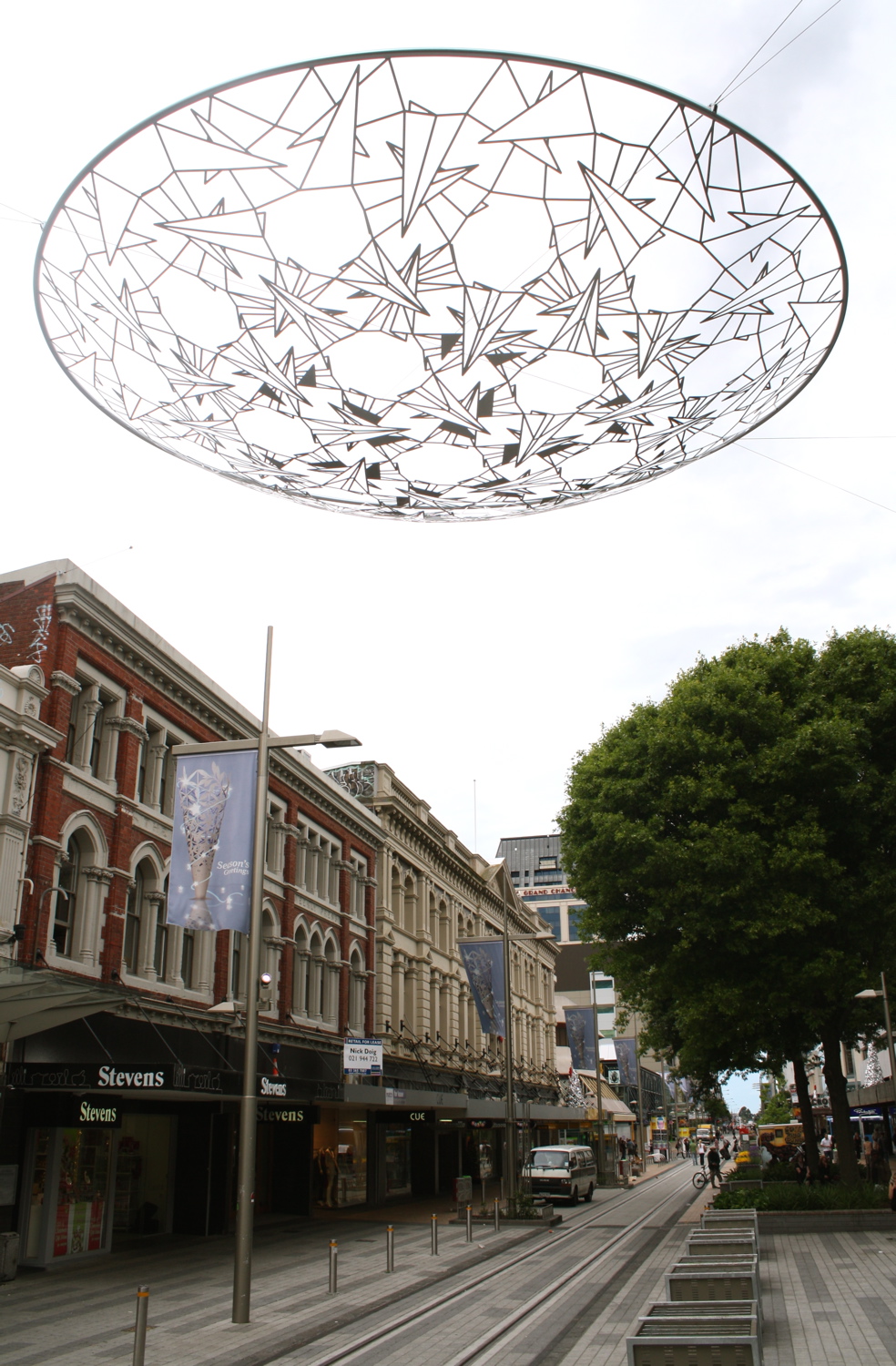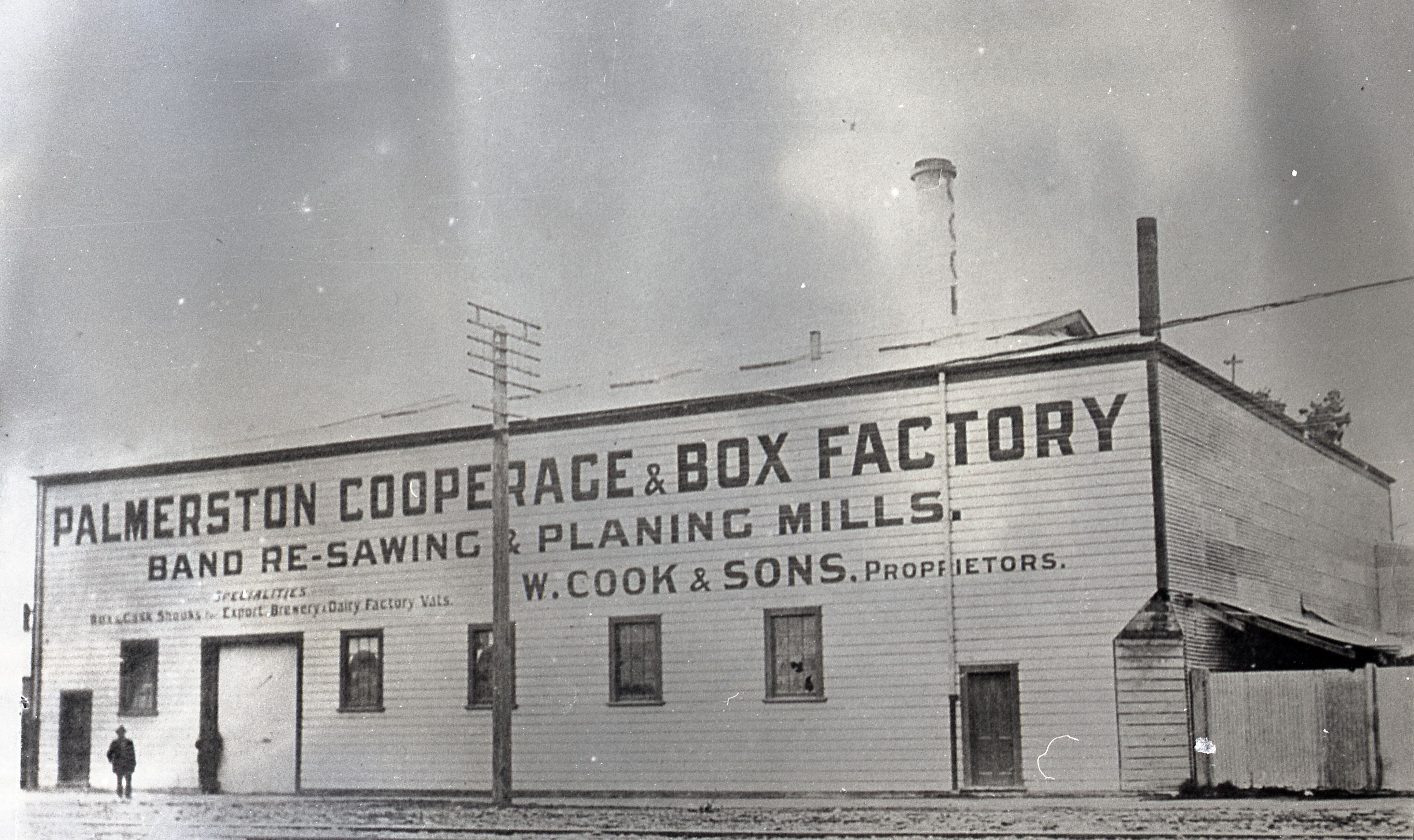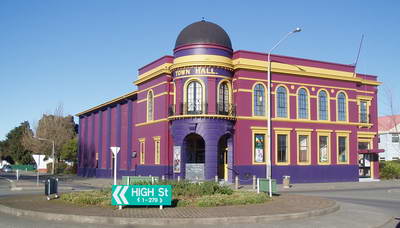|
Lower Riccarton
Riccarton is a suburb of Christchurch. It is due west of the city centre, separated from it by Hagley Park. Upper Riccarton is to the west of Riccarton. History On 12 April 1840, the ship ''Sarah and Elizabeth'' landed Herriot, McGillivray, Ellis, Shaw (and wife) and McKinnon (with his wife and child) who established a farm at Riccarton. They were the first European settlers on the plains." In January 1841, they abandoned their attempt to farm in the area. Riccarton House was the homestead commissioned by Jane Deans in circa 1855. The Deans brothers, who along with the Gebbies and the Mansons were the second group of Europeans to settle in Christchurch on the same site as the first group in 1843. Their original cottage is on the grounds, moved twice from its original position. Riccarton House is now a restaurant and function centre, and conducts regular tours. The Deans brothers, John and William, named the suburb after the parish in Ayrshire, Scotland, in which they were bo ... [...More Info...] [...Related Items...] OR: [Wikipedia] [Google] [Baidu] |
Riccarton House
Riccarton House is an historic building in Christchurch, New Zealand. It is part of the Riccarton estate, the first area in Christchurch lived in by white settlers, after which the suburb of Riccarton, New Zealand, Riccarton is named. The house was commissioned by Jane Deans, the widow of Canterbury, New Zealand, Canterbury pioneer John Deans (pioneer), John Deans, and finished in 1856. It was twice extended; first in 1874, and the work carried out in 1900 more than doubled the size of the house. The Riccarton estate has in stages become the property of Christchurch City Council and Riccarton House itself was sold by the Deans family to the city in 1947. Damaged by the 2010 Canterbury earthquake, earthquakes in 2010 and 2011 Christchurch earthquake, 2011, the repaired and renovated building was reopened in June 2014. Riccarton House is used as a restaurant and for functions, and a popular market is held on Saturdays in front of it. History Riccarton House was commissioned by Jane ... [...More Info...] [...Related Items...] OR: [Wikipedia] [Google] [Baidu] |
The Press
''The Press'' is a daily newspaper published in Christchurch, New Zealand owned by media business Stuff Ltd. First published in 1861, the newspaper is the largest circulating daily in the South Island and publishes Monday to Saturday. One community newspaper—''Northern Outlook''- is also published by ''The Press'' and is free. The newspaper has won the title of New Zealand Newspaper of the Year (in its circulation category) three times: in 2006, 2007 and 2012. It has also won the overall Newspaper of the Year title twice: in 2006 and 2007. History James FitzGerald came to Lyttelton on the ''Charlotte Jane'' in December 1850, and was from January 1851 the first editor of the ''Lyttelton Times'', Canterbury's first newspaper. From 1853, he focussed on politics and withdrew from the ''Lyttelton Times''. After several years in England, he returned to Canterbury concerned about the proposed capital works programme of the provincial government, with his chief concern the pro ... [...More Info...] [...Related Items...] OR: [Wikipedia] [Google] [Baidu] |
Entomology
Entomology () is the science, scientific study of insects, a branch of zoology. In the past the term "insect" was less specific, and historically the definition of entomology would also include the study of animals in other arthropod groups, such as arachnids, myriapods, and crustaceans. This wider meaning may still be encountered in informal use. Like several of the other fields that are categorized within zoology, entomology is a taxon-based category; any form of scientific study in which there is a focus on insect-related inquiries is, by definition, entomology. Entomology therefore overlaps with a cross-section of topics as diverse as molecular genetics, behavior, neuroscience, biomechanics, biochemistry, systematics, physiology, developmental biology, ecology, morphology (biology), morphology, and paleontology. Over 1.3 million insect species have been described, more than two-thirds of all known species. Some insect species date back to around 400 million years ago. Th ... [...More Info...] [...Related Items...] OR: [Wikipedia] [Google] [Baidu] |
Leonard Cockayne
Leonard Cockayne (7 April 1855 – 8 July 1934) is regarded as New Zealand's greatest botanist and a founder of modern science in New Zealand. Biography He was born in Sheffield, England where he attended Wesley College. He travelled to Australia in 1877 and shortly moved on to New Zealand where he became established as a botanist. In June 1901, he attended the first conference of horticulturists in New Zealand at Dunedin where he presented a paper on the plants of the Chatham Islands and advocated the establishment of experimental plant research stations in New Zealand. This helped to establish Cockayne's reputation. Cockayne was a member of the 1907 Sub-Antarctic Islands Scientific Expedition. The main aim of the expedition was to extend the magnetic survey of New Zealand by investigating Auckland and Campbell Islands but botanical, biological and zoological surveys were also conducted. The voyage also resulted in rescue of the castaways of the shipwreck the '' Dundonald'' ... [...More Info...] [...Related Items...] OR: [Wikipedia] [Google] [Baidu] |
Harry Ell
Henry George Ell (probably 24 September 1862 – 27 June 1934), commonly known as Harry Ell, was a Christchurch City Council, Christchurch City councillor and a New Zealand Member of parliament, Member of Parliament. He is famous for his conservation work around Christchurch's Port Hills, his advocacy for the Summit Road, and his construction of the Sign of the Takahe and other road houses along the Summit Road. Early years Ell was born in Christchurch, New Zealand, and grew up on his father's farm in Halswell. As a teenager he worked at the Canterbury Museum, then as a farm hand. Between 1881 and 1884 he was a member of the Armed Constabulary in Taranaki, where he participated in the destruction of Parihaka. This experience turned him into a stern critic of the race-relations policies of the time. Ell was a Christchurch City councillor in 1903 and then again between 1917 and 1919. He was a member of the Knights of Labour and the Canterbury Liberal Association. Member of Parli ... [...More Info...] [...Related Items...] OR: [Wikipedia] [Google] [Baidu] |
New Zealand Company
The New Zealand Company, chartered in the United Kingdom, was a company that existed in the first half of the 19th century on a business model focused on the systematic colonisation of New Zealand. The company was formed to carry out the principles devised by Edward Gibbon Wakefield, who envisaged the creation of a new-model English society in the southern hemisphere. Under Wakefield's model, the colony would attract capitalists who would then have a ready supply of labour—migrant labourers who could not initially afford to be property owners, but who would have the expectation of one-day buying land with their savings. The New Zealand Company established settlements at Wellington, Nelson, Wanganui and Dunedin and also became involved in the settling of New Plymouth and Christchurch. The original New Zealand Company started in 1825, with little success, then rose as a new company when it merged with Wakefield's New Zealand Association in 1837, received its royal charter in 1840, ... [...More Info...] [...Related Items...] OR: [Wikipedia] [Google] [Baidu] |
Kiwi (bird)
Kiwi ( ) are flightless birds endemic to New Zealand of the order Apterygiformes. The five extant species fall into the family Apterygidae () and genus ''Apteryx'' (). Approximately the size of a domestic chicken, kiwi are by far the smallest living ratites (which also include ostriches, emus, rheas and cassowaries). However, the ratite group is polyphyletic, and cladistically also includes tinamous, which can also be of moderate size. Members of this expanded group are known as paleognaths. DNA sequence comparisons have yielded the conclusion that kiwi are much more closely related to the extinct Malagasy elephant birds than to the moa with which they shared New Zealand. There are five recognised species, four of which are currently listed as vulnerable, and one of which is near-threatened. All species have been negatively affected by historic deforestation, but their remaining habitat is well-protected in large forest reserves and national parks. At present, the greates ... [...More Info...] [...Related Items...] OR: [Wikipedia] [Google] [Baidu] |
Perimeter Fence
Demarcation of a perimeter, when the protection of assets, personnel or buildings is required, is normally affected by the building of a perimeter fence system. The level of protection offered varies according to the threat level to the perimeter. Different types of perimeter fencing include: * Timber fencing * Palisade fencing * Welded wire mesh fence fencing * Chain-link fencing * Rolled mesh fencing * Metal railings Vertical bar fencing has been the most popular form of perimeter security fence since the 1980s. Since the 2000s, welded wire mesh and acoustic barriers have also become popular types of perimeter fence around the world. Vertical bar, acoustic barriers and welded mesh are used in commercial projects and landmarks, in schools, and in airports and transport hubs. In high-security applications, sensors may be attached to the fence that generate alarms when they detect someone cutting, climbing, or lifting the fence fabric. Domestic and residential projects have si ... [...More Info...] [...Related Items...] OR: [Wikipedia] [Google] [Baidu] |
Dacrycarpus Dacrydioides
''Dacrycarpus dacrydioides'', commonly known as kahikatea (from Māori) and white pine, is a coniferous tree endemic to New Zealand. A podocarp, it is New Zealand's tallest tree, gaining heights of 60 m and a life span of 600 years. It was first described botanically by the French botanist Achille Richard in 1832 as ''Podocarpus'' ''dacrydioides'', and was given its current binomial name ''Dacrycarpus dacrydioides'' in 1969 by the American botanist David de Laubenfels. Analysis of DNA has confirmed its evolutionary relationship with other species in the genera ''Dacrycarpus'' and ''Dacrydium''. In traditional Māori culture, it is an important source of timber for the building of waka and making of tools, of food in the form of its berries, and of dye. When Europeans discovered it in the 18th century they found large remnant stands in both the North and South Islands, despite burning of forest by early Māori. Its use for timber and its damp fertile habitat, ideal for dairy ... [...More Info...] [...Related Items...] OR: [Wikipedia] [Google] [Baidu] |
Rangiora, New Zealand
Rangiora is the largest town and seat of the Waimakariri District, in Canterbury, New Zealand. It is north of Christchurch, and is part of the Christchurch metropolitan area. With an estimated population of Rangiora is the 30th largest urban area in New Zealand, and the fifth-largest in the Canterbury region (behind Christchurch, Timaru, Ashburton and Rolleston). Geography Rangiora is north of Christchurch's Cathedral Square or 20 minutes drive north of the Christchurch International Airport. It is close to the northern end of Canterbury's Inland Scenic Route (formerly State Highway 72), which skirts the inner edge of the Canterbury Plains, running southwest to Timaru via Oxford and Geraldine. The Ashley River / Rakahuri is just to the north of the town. Climate Rangiora has an oceanic climate, (''Cfb'' according to the Köppen climate classification), with warm summers and mild winters. Rangiora has an average annual mean of , an average annual high of and an average ... [...More Info...] [...Related Items...] OR: [Wikipedia] [Google] [Baidu] |
Kaiapoi, New Zealand
Kaiapoi is a town in the Waimakariri District of the Canterbury region, in the South Island of New Zealand. The town is located approximately 17 kilometres north of central Christchurch, close to the mouth of the Waimakariri River. It is considered a satellite town of Christchurch and is part of the Christchurch functional urban area. Kaiapoi is known for its substantial precolonial pā, established by powerful Kāi Tahu nobleman Tūrākautahi. One of the sons of the powerful rangatira Tūāhuriri, Tūrākautahi exerted vast influence over historical Ōtautahi (the site of modern-day Christchurch). His family controlled the pā he established in the area until it was sacked in 1830. The pā was one of the greatest centre of knowledge, economics and natural resources, with a highly complex social structure. All decisions were undertaken by the nobility, who consulted with highly skilled tohunga. In selecting the pā site, Tūrākautahi determined that food ( kai) would need t ... [...More Info...] [...Related Items...] OR: [Wikipedia] [Google] [Baidu] |
Papanui
Papanui is a major suburb of Christchurch, New Zealand. It is situated five kilometers to the northwest of the city centre. Papanui is a middle socio-economic area with a population of 3,645 consisting predominantly of Pākehā (NZ European & Others) 86.9%, Asian 7.6%, Māori 5.3%, Pacific peoples 3.1%, Middle Eastern/Latin American/African 0.7% (2013 census). The suburb is located at the junction of three busy thoroughfares; Papanui Road leading to the City, the Main North Road that leads to North Canterbury and Harewood Road that leads to Christchurch International Airport. However, as with most Christchurch suburbs, Papanui has no defined borders. Over the last 160 years Papanui has developed into a major suburban centre and is a satellite centre for Government and City Council services. These include the central government 'Super Centre' in Winstone Avenue, Housing New Zealand in Restell Street and the Council Service Centre and Library on Langdons Road. The area ha ... [...More Info...] [...Related Items...] OR: [Wikipedia] [Google] [Baidu] |









